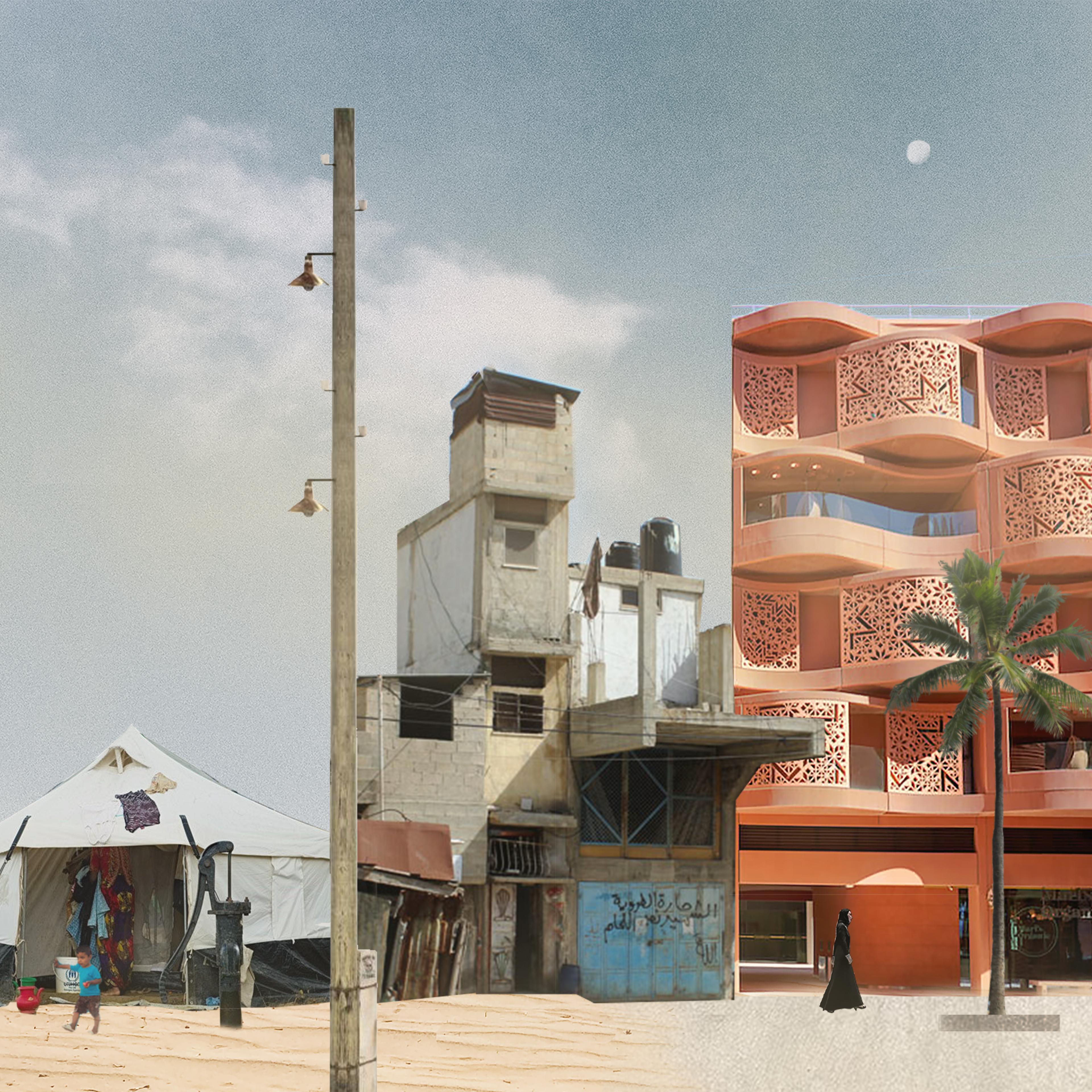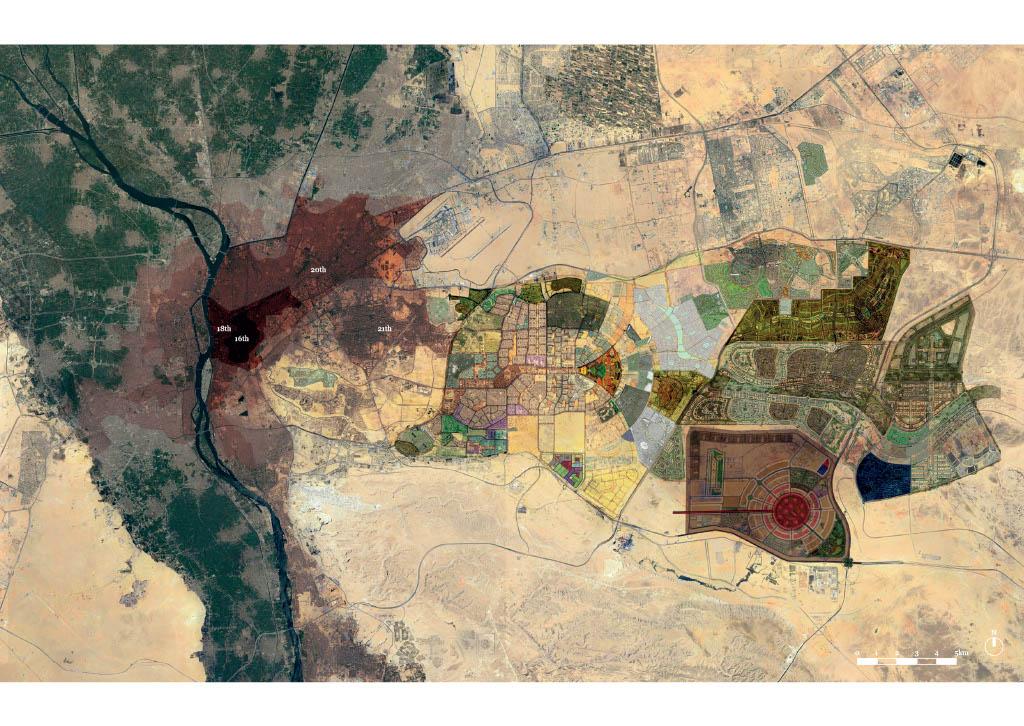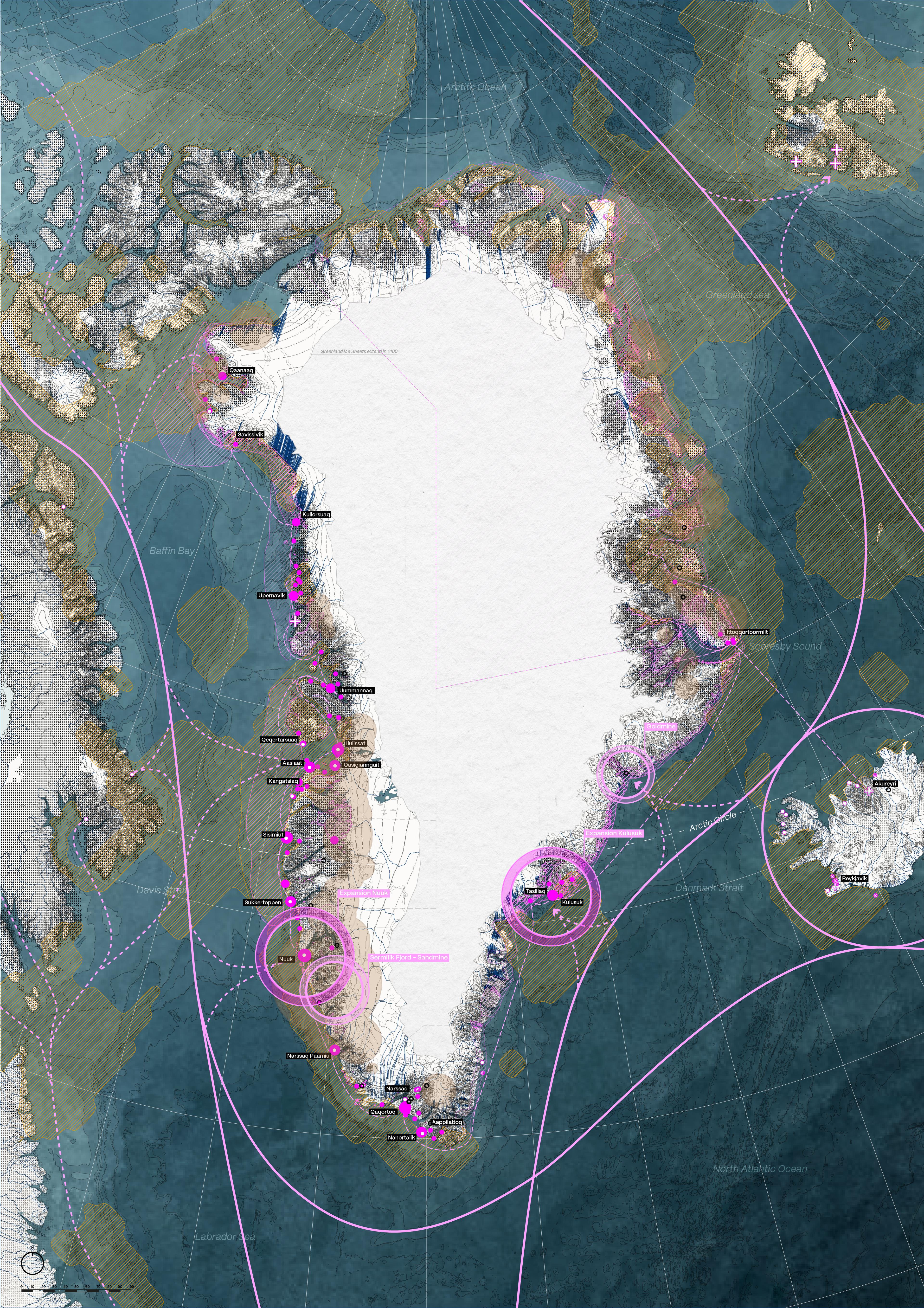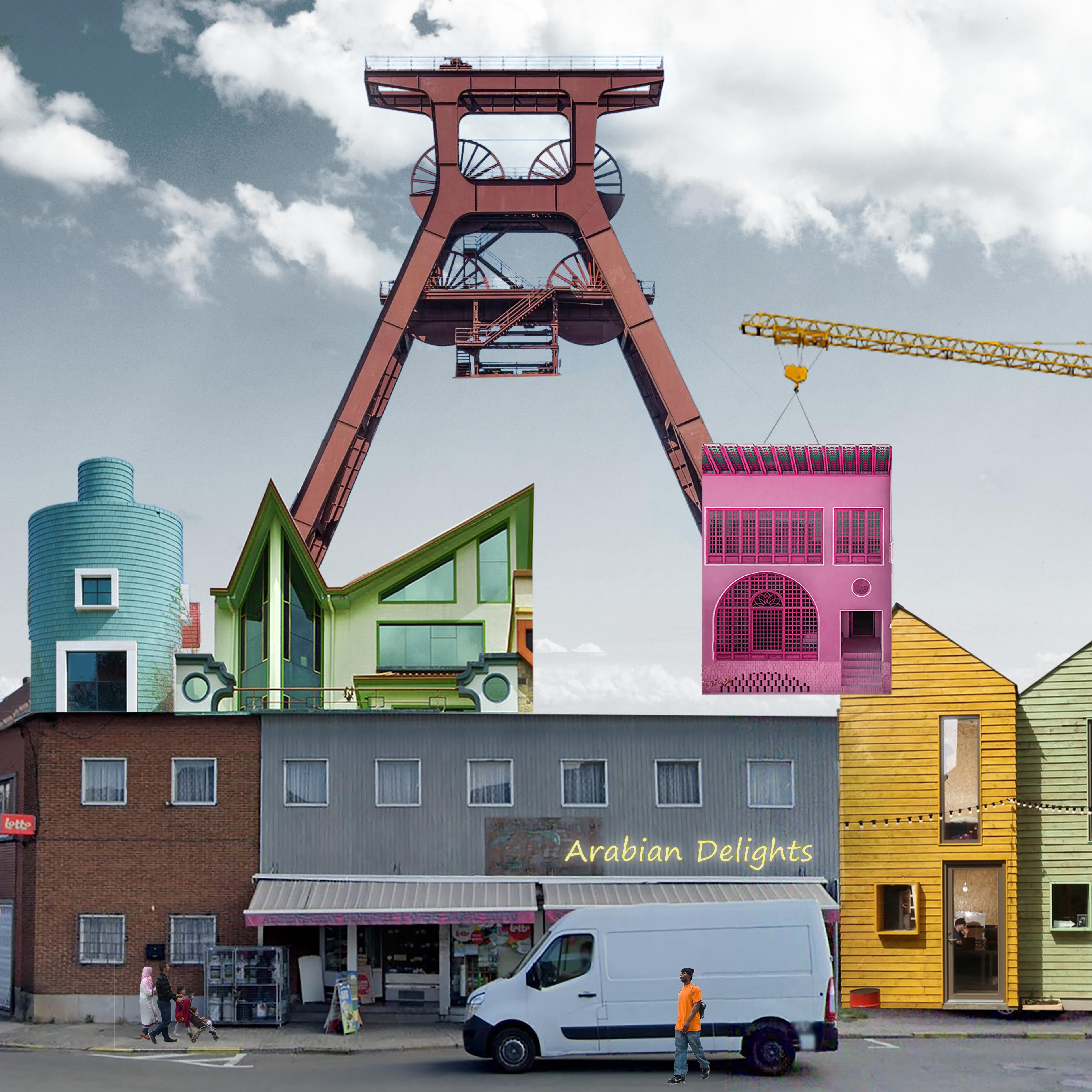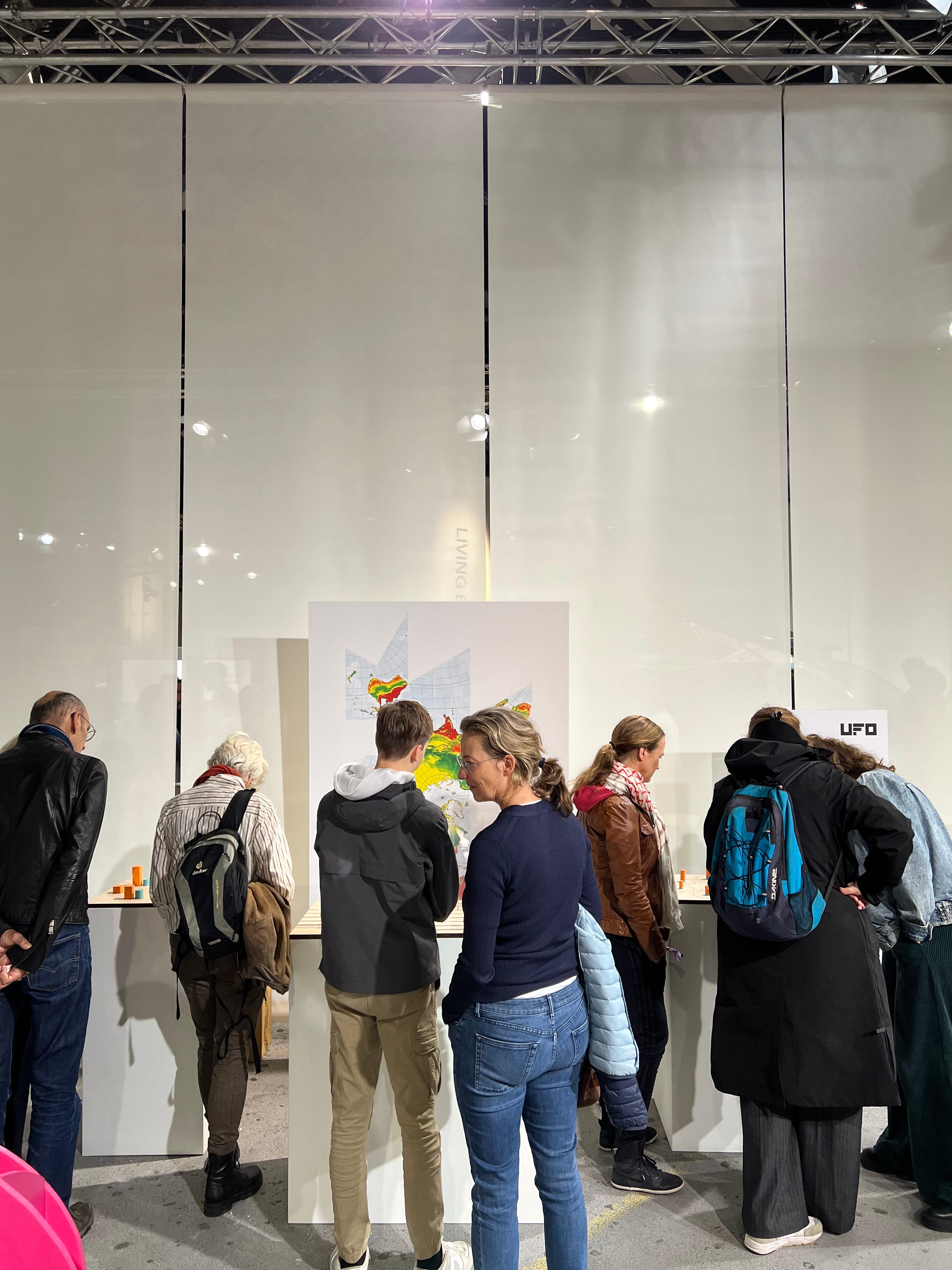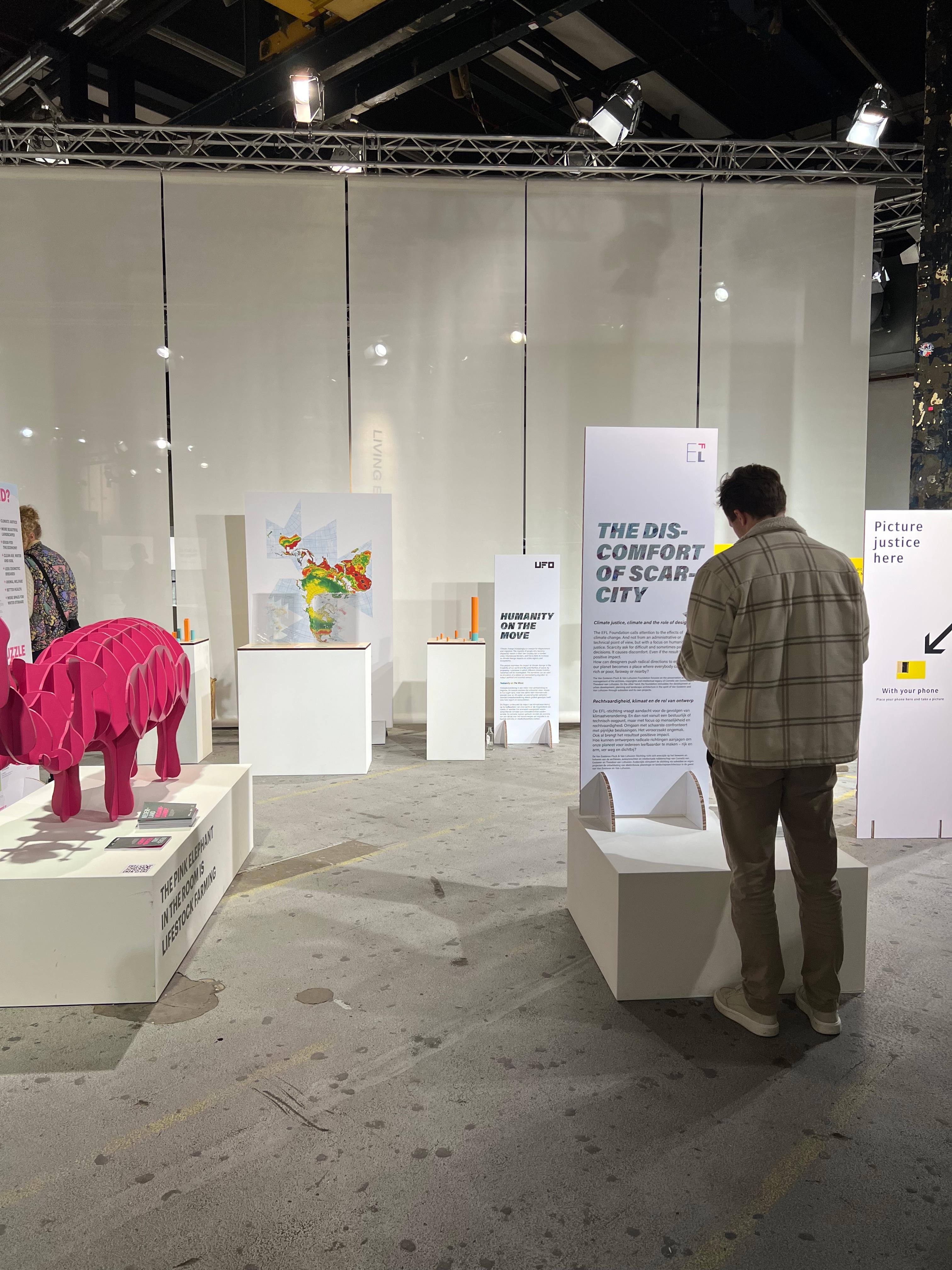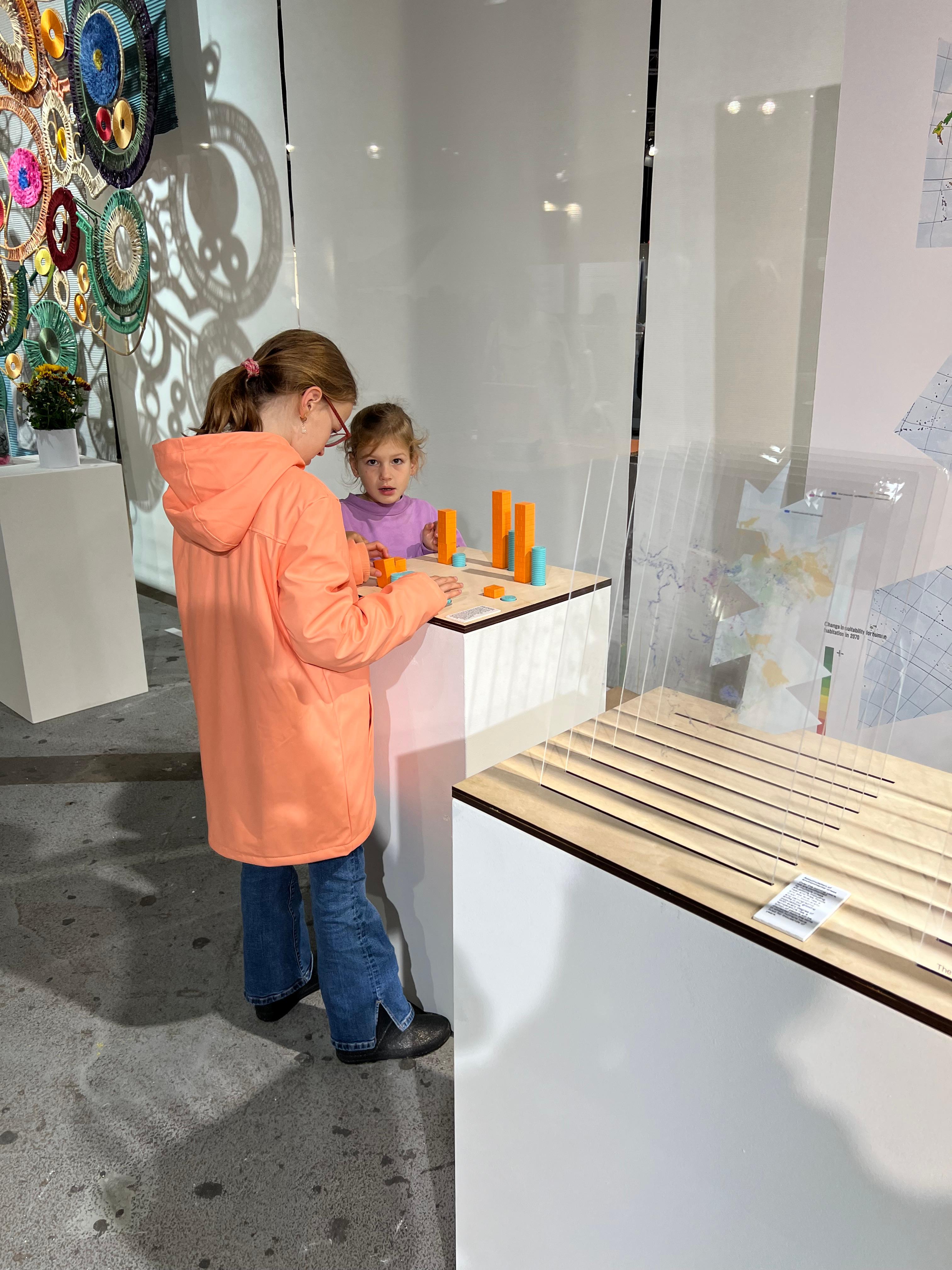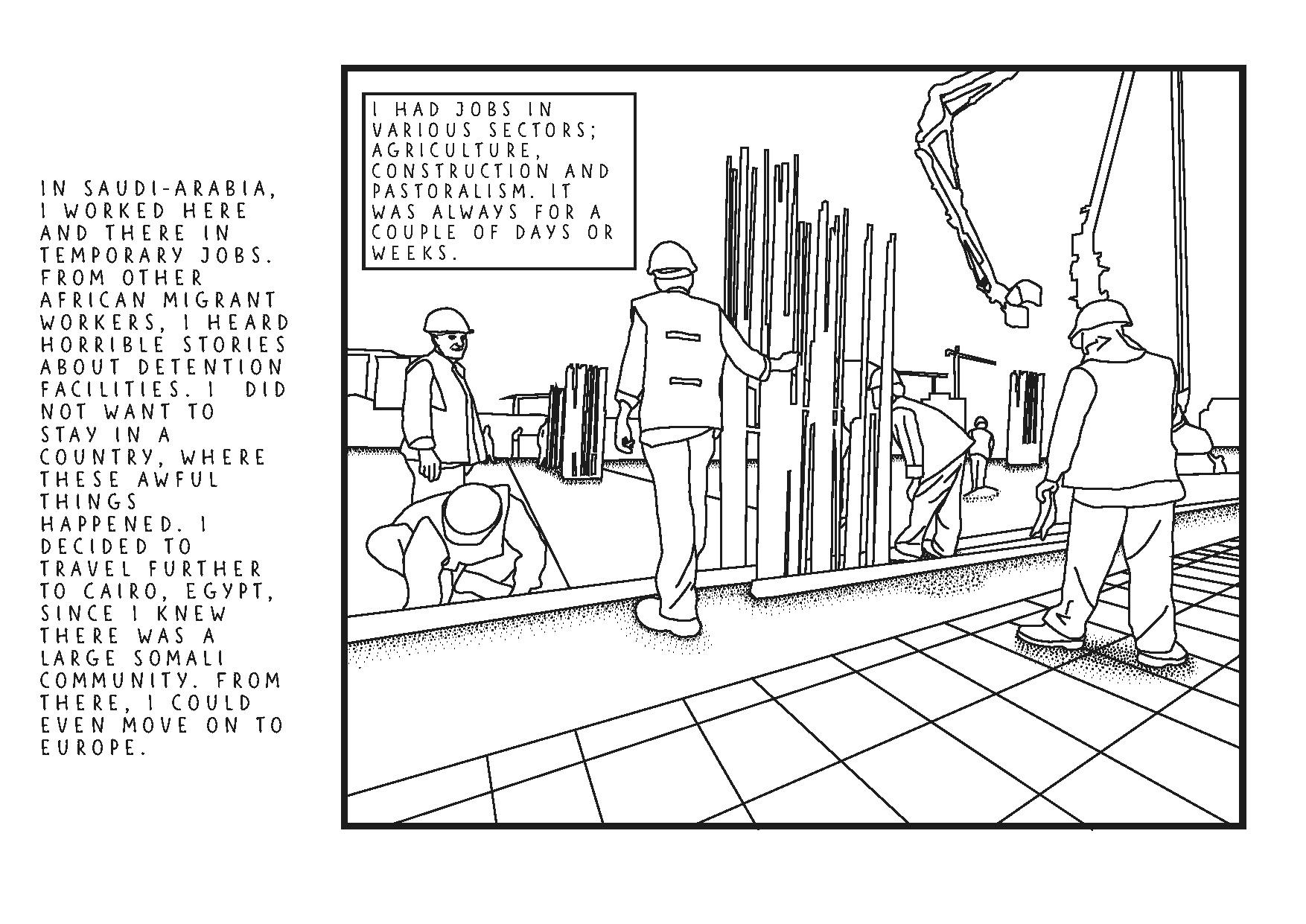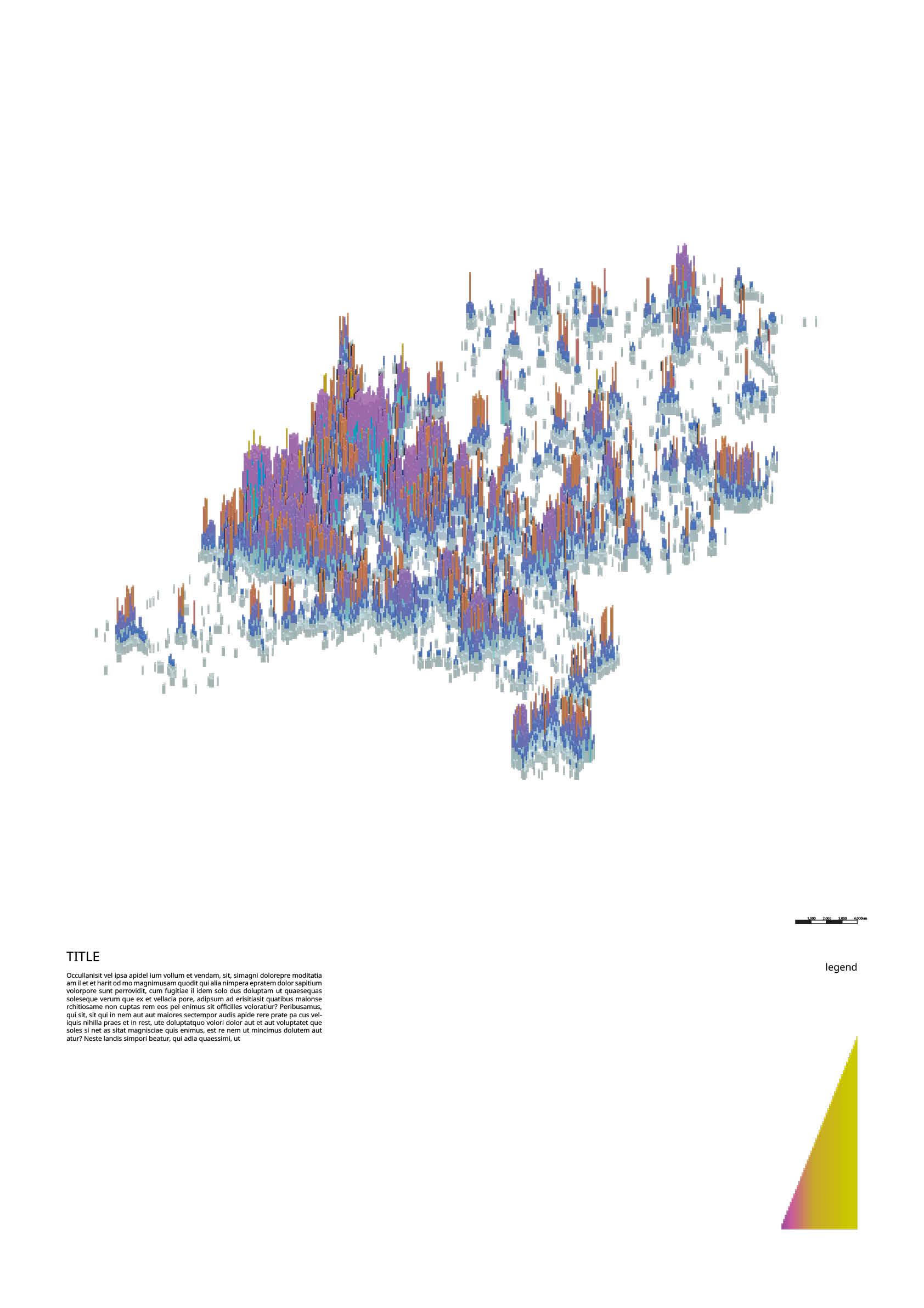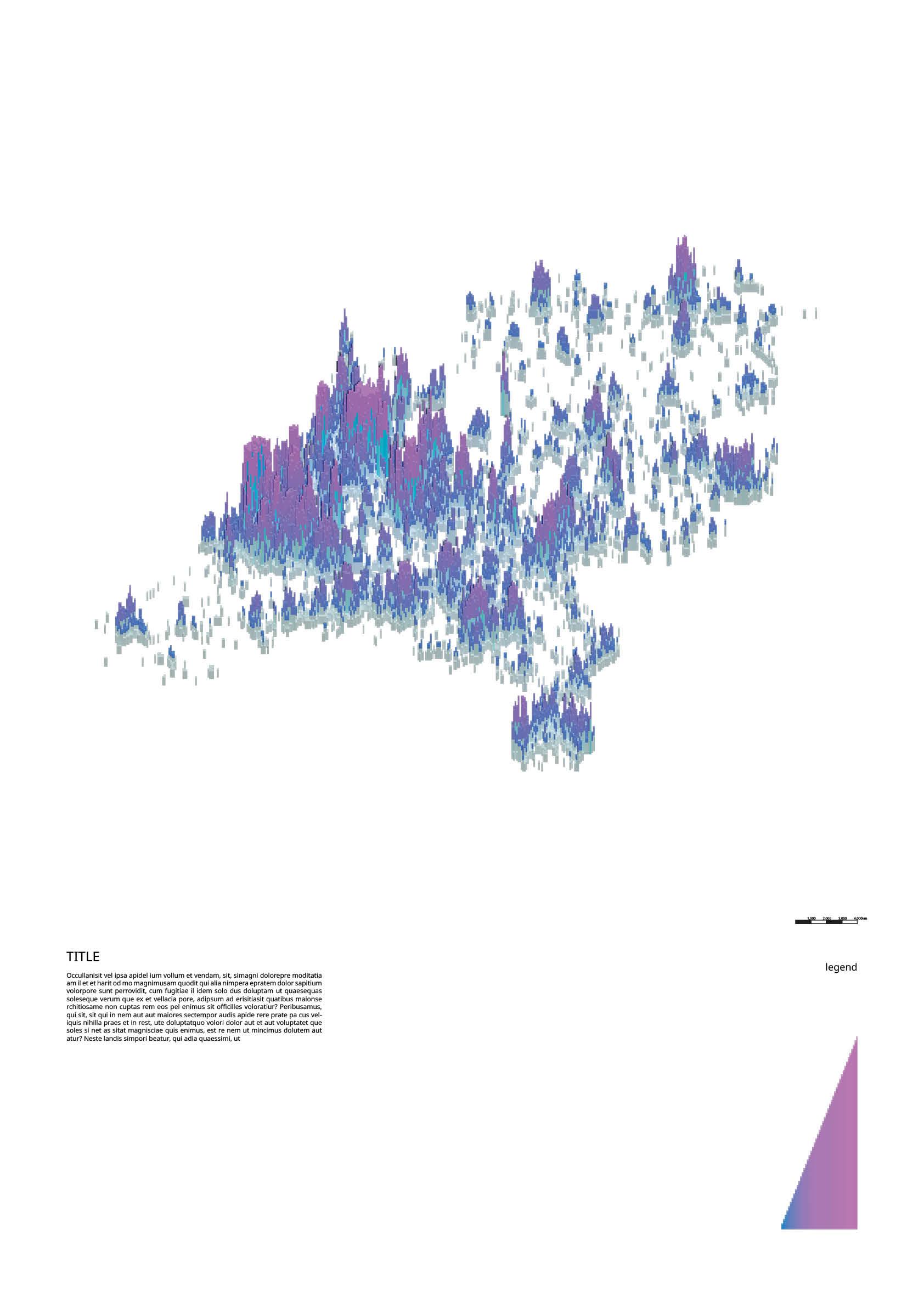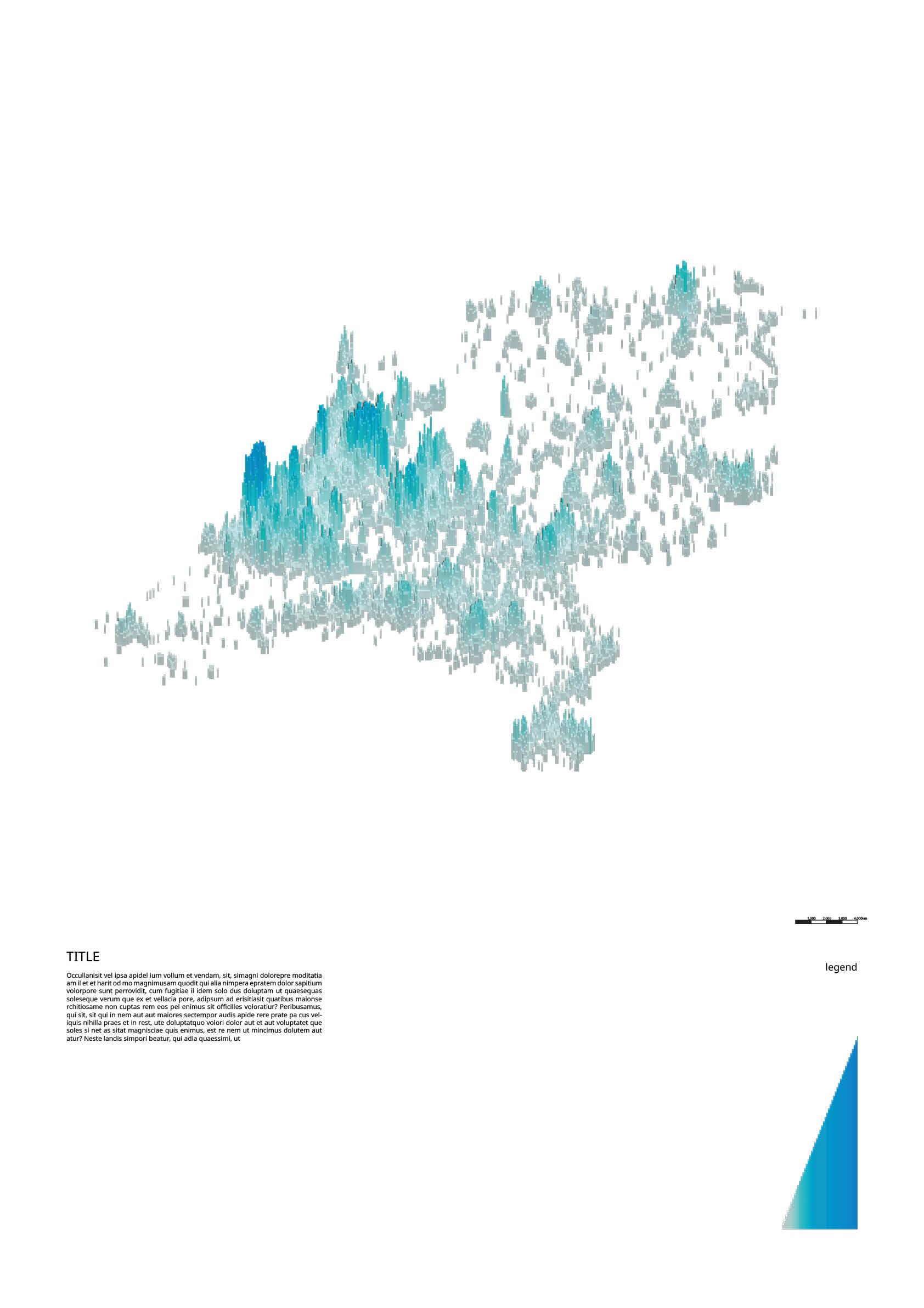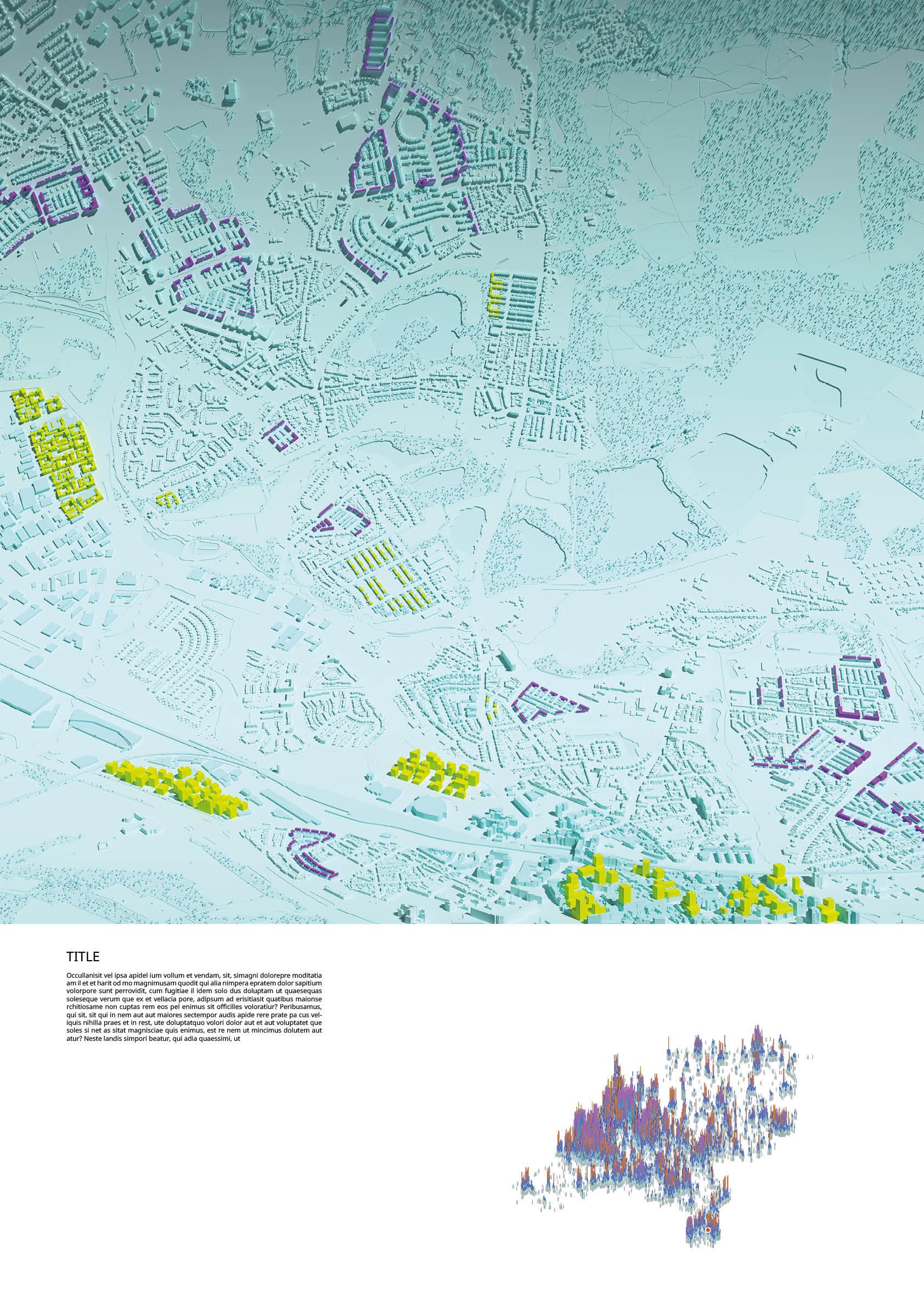Climate change increasingly is a reason for displacement and migration. This may be because of a particular catastrophic event, such as a flash flood or wildfire, but it can also be the result of cumulative impacts of drought or sea-level rise, slowly making an area uninhabitable. The majority of people who become displaced, remain in their own country and move to cities, but a number cross international borders, and this is likely to increase as climate change impacts on entire regions and ecosystems. This project examines the impact of climate change on the liveability of our world and the potentialities of space. Which areas will be most affected by global warming? Where will people move to, and where can new places for living be built?
Research
Agents of Change - Lena Knappers & Bram van Ooijen
Humanity on the move - Exploring climate mobility narratives
2022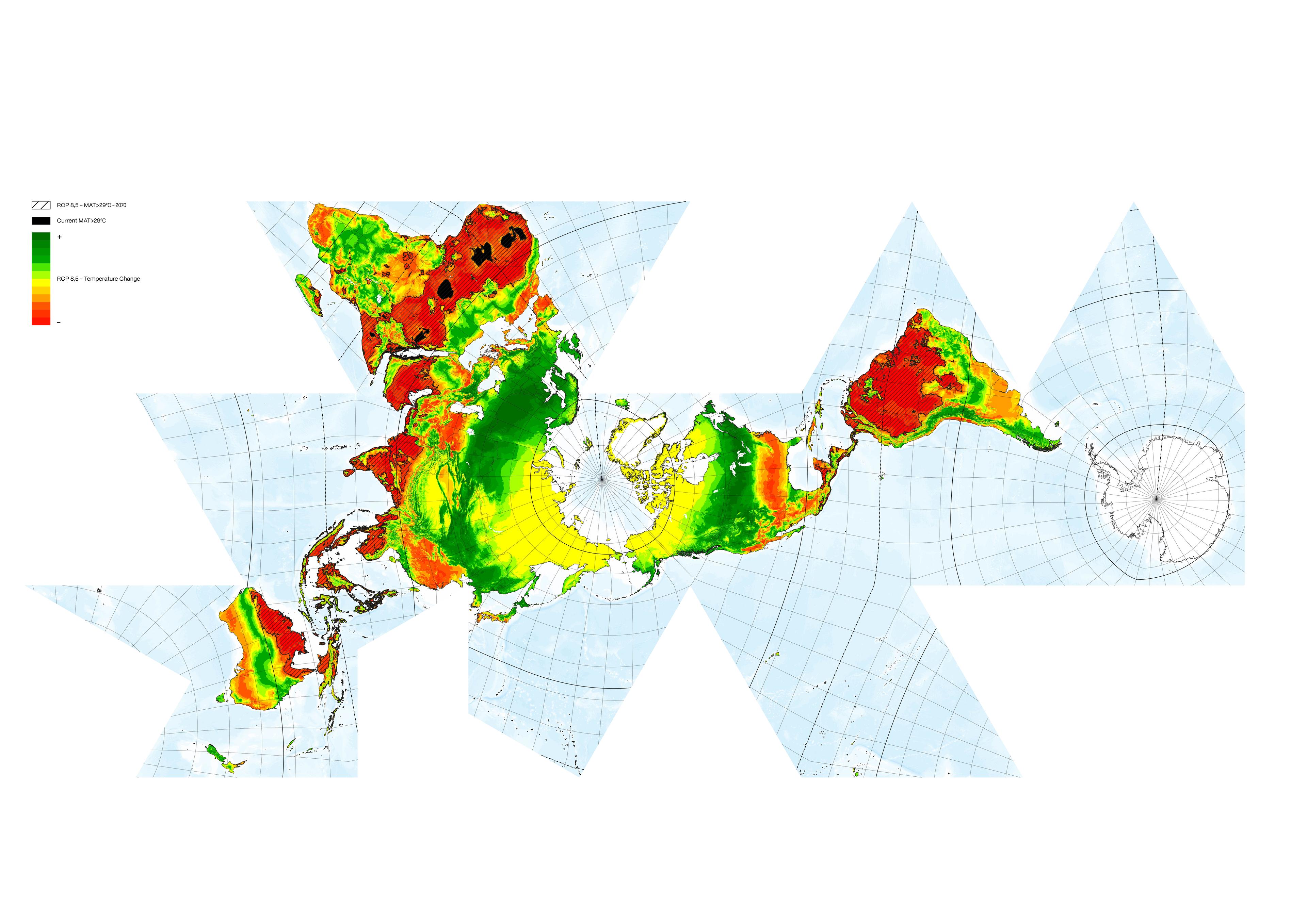
Research by

- Lena Knappers

- Bram van Ooijen
- Credits
Background of 'Humanity on the move'
Climate induced migration takes place disproportionally in low-income countries and intersects with many other causes for displacement. People most affected by climate change are those already experiencing threats to their lives and livelihoods. Nations have an obligation to offer asylum to refugees, but under the legal definitions of the refugee, still based on the 1951 Refugee Convection, this does not include those who have to leave their home because of climate change. Climate impacted persons encounter a system that offers neither protection nor the right to resettle in a more habitable space. Therefore, many people cannot find a safe and healthy place to live because they are simply not qualified as refugee. At the same time, the world’s wealthiest countries spend more on arming their borders to keep migrants out, than on tackling the climate crisis that forces people from their homes in the first place, even when exactly these prosperous industrial countries have caused climate change and high carbon emission. Migration flows come at a terrible human cost. It is therefore important to investigate in more just alternatives for the way we are dealing with climate change, migration and the organisation of space today.
“Climate change feels like your home is moving away from you”
What is the research method of 'Humanity on the move'?
Several research methods are used in this project. First, we looked into various data, investigating the reasons for climate induced displacement and migration. Developing a short video, showing various world maps, we tried to gain insight into the influence of global warming on the liveability of our planet. Which areas are hit hardest by climate change, and which areas benefit from it? In addition, we are exploring who the current and possible future climate impacted migrants of our world are and will be, and what is means for people to have to leave their home because of the consequences of a warming planet. In order to do so, we are collecting and visualising several stories, partly based on real testimonies and experiences of people themselves and partly fiction. And last but not least, we are working on various design scenarios through ‘research by design’. In the scenarios alternative climate mobility narratives will be explored and designed, based on various global temperature increases.
What do we aim to achieve with 'Humanity on the move'?
The results of this project can be used as evocation of a debate on reconsidering migration in today’s political and societal context. This project proposes an alternative way of looking at migration in the context of a changing climate. While climate induced displacement and migration is already happening and will increase, international law currently gives no protection to those affected by the undesirable effects of climate change. Not only does global fixation on borders as a solution to migration cause unnecessary suffering on people, it also obscures ways that seek to identify and begin to find solutions to a future of more displacement and migration, a future that invites more generosity and responsibility. In this project, we argue that the narrative that today stigmatises migration as a threat, needs to shift to a climate mobility narrative that understands that movement can be a form of adaptation and creation. Movement can be supported and facilitated. Movement can be predicted and imagined.
When can the reader expect to see the results of 'Humanity on the move'?
Since the start of the research, (partial) results have been presented through various programs and events. Examples include the Back to School with program of the Independent School for the City, the final event Designing for Climate Justice, and Dutch Design Week in Eindhoven. On June 20, 2025 (World Refugee Day), the research will also be part of the program The Border Crossed Us at Felix Meritis in Amsterdam. In addition to these public presentations, we are currently working on a publication titled Biographies of Space, which is expected to be released in mid-2026. In that same year, we aim to resume the design and scenario-based research. To this end, we are exploring new strategic partnerships and collaborations—together with the IABR—that can contribute to further developing and translating the research, or parts of it, into tangible and applicable forms.
